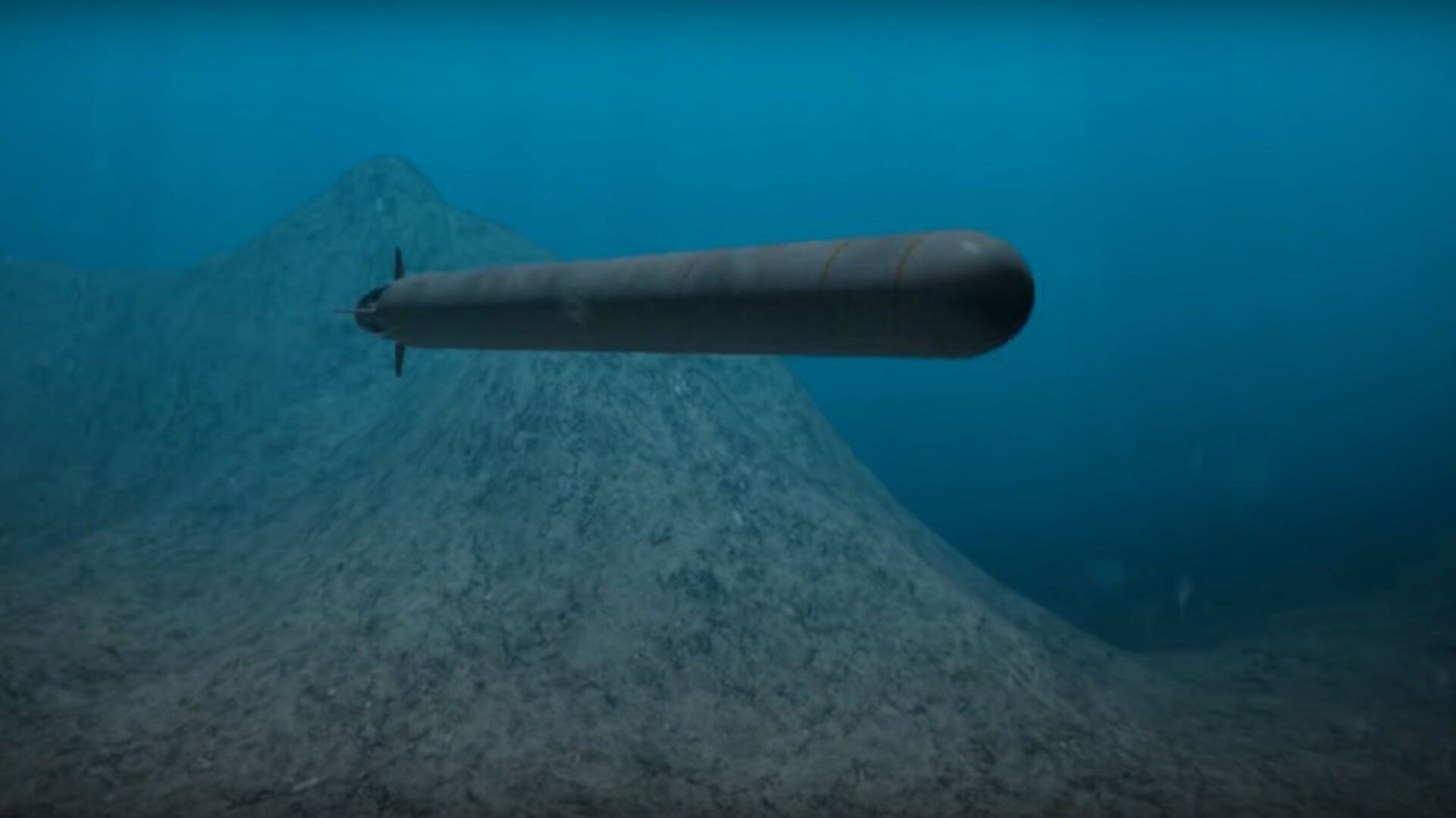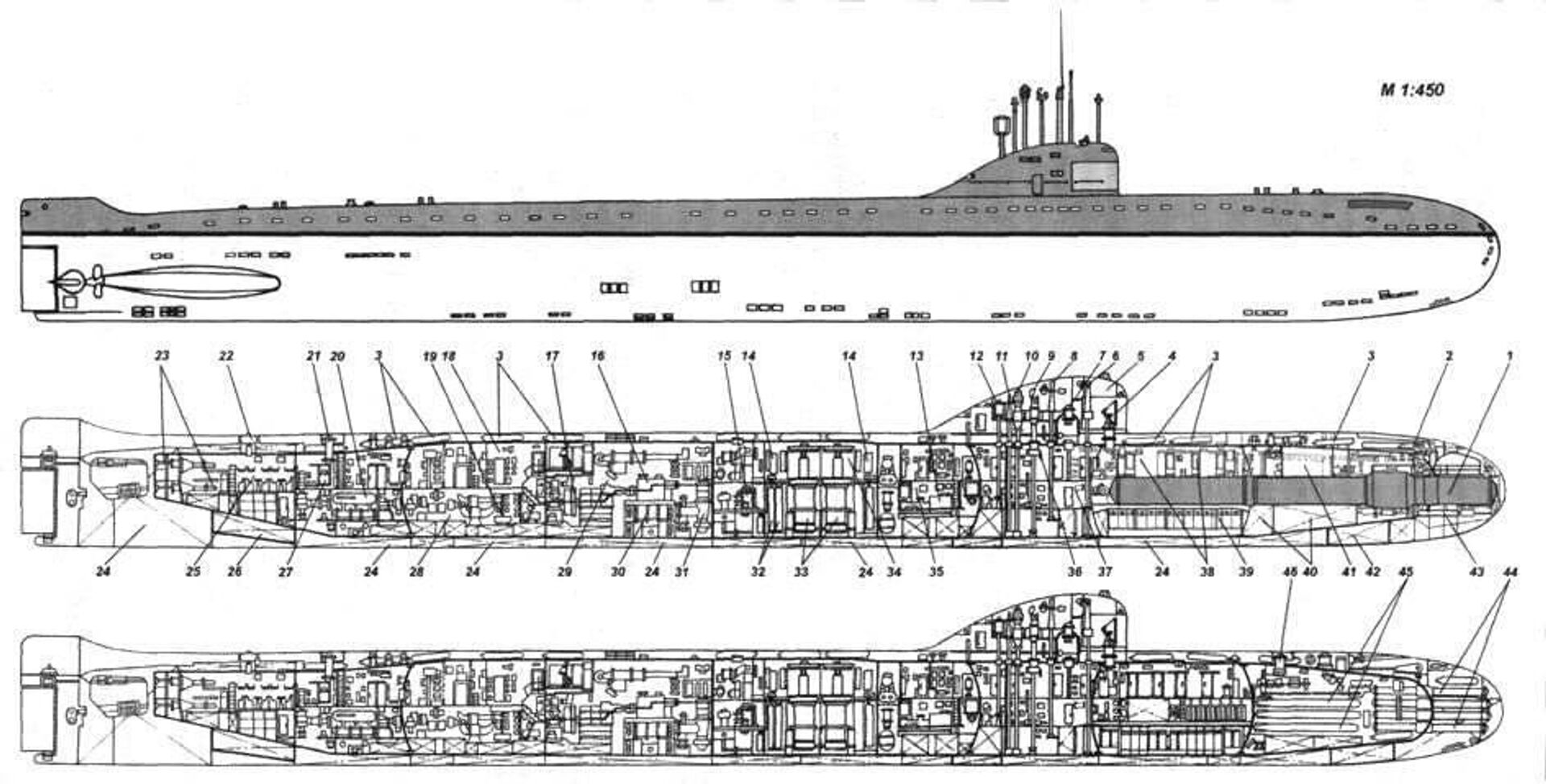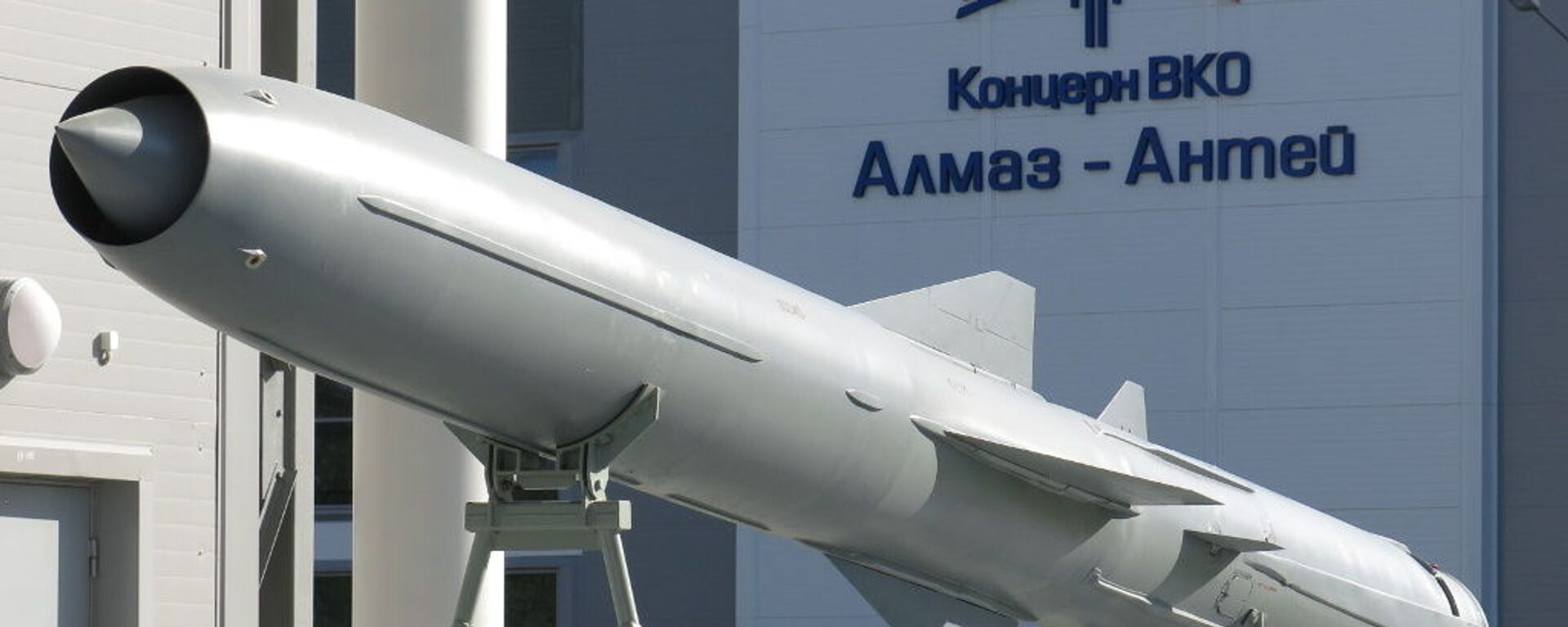https://sputnikglobe.com/20230623/everything-we-know-about-tsunami-causing-poseidon-drone-subs-1111420657.html
Everything We Know About ‘Tsunami-Causing’ Poseidon Drone Subs
Everything We Know About ‘Tsunami-Causing’ Poseidon Drone Subs
Sputnik International
An informed source has given Sputnik exclusive new details on the Poseidon – the nuclear-capable, nuclear powered, unmanned underwater vehicle first unveiled... 23.06.2023, Sputnik International
2023-06-23T13:40+0000
2023-06-23T13:40+0000
2023-06-23T16:47+0000
military
vladimir putin
russia
khabarovsk
navy
nato
washington
t-15
poseidon
nuclear posture review
https://cdn1.img.sputnikglobe.com/img/106454/62/1064546243_18:0:1414:785_1920x0_80_0_0_87b86734ab3368b0202b57b51ca6bfd0.jpg
Bench testing of the Poseidon drone sub’s nuclear reactor installations has been carried out successfully, confirming their safety and readiness for operation, an informed source in the Russian defense sector told Sputnik this week.The first sea trials of the autonomous drones are scheduled to start later this summer, according to the source, and will focus on the operational testing of the Poseidon’s nuclear power plant. The trials will involve the Belgorod – the Russian Project 949A cruise missile submarine custom-modified for special operations made famous in 2015, when information on a secret Russian autonomous nuclear-powered autonomous sub was first leaked in a Russian television news report.On Thursday, Russian Navy Commander-in-Chief Nikolai Evmenov confirmed to Sputnik that the Belgorod, which was delivered to the Navy in 2022, will formally enter service sometime later this year.What Do We Know About the Poseidon?The Poseidon project, originally codenamed the Status-6, NATO code name Kanyon, was first officially unveiled in 2018, with Russia’s Defense Ministry publishing footage of development work, plus a computer-generated presentation of the principles of the autonomous torpedo’s operations. This included footage of the Poseidon’s detachment from its sub carrier and maneuvering near the bottom of the ocean floor toward targets, which can comprise an enemy carrier group, or an enemy port.Since then, additional details, including information about the Poseidon’s dimensions and weapons payload, have been made available. The autonomous torpedo is 20 meters long, 1.8 meters in diameter, and weighs 100 tons.Equipped with a nuclear reactor and operating autonomously with the help of satellite communications and artificial intelligence, Poseidons have what is essentially an unlimited range – allowing them to travel to any underwater location on Earth, and to remain operational so long as their technical resource allows. The system has an estimated operating speed of between 60-70 knots (about 100-130 km/hour) respectively, and the ability to carry conventional explosives, or a nuclear warhead with an explosive power of up to two megatons.What Do We Know About the Poseidon’s Carriers?While the Belgorod sub is being used to develop and test the Poseidon, an entire lineup of special-purposed submarines known as the Project 09851 Khabarovsk-class is being built to carry them.The Khabarovsk, the lead boat of the new fleet, was launched last year, and is expected to be commissioned with the Pacific Fleet in 2024. The second sub, laid down in 2017, is expected in 2025, and will serve in the Northern Fleet. Two more Khabarovsk-class subs have been ordered. The Khabarovsk-class is widely believed to be a modification of the Borei-class of nuclear-powered ballistic missile subs, featuring the same basic hull, but customized to carry up to six Poseidon drones, and possibly, 6-8 533 mm torpedoes for defense against attacks by enemy vessels.What Does the US Say About Poseidons?The Pentagon appears to acknowledge the strategic significance of the Poseidon, with its 2018 Nuclear Posture Review acknowledging that Russia is “developing” a “new intercontinental, nuclear armed, nuclear-powered, undersea autonomous torpedo.” In 2020, the US Naval Institute said that the “ramifications” of the new system “cannot be overstated,” given that it is “impervious to ballistic-missile defense” and cannot be detected until it is detonated.Also in 2020, the State Department expressed fears that Poseidon drones could swallow up US coastal cities in “radioactive tsunamis,” and condemned their development as a potential violation of “applicable international legal rules and principles.”Does the Poseidon Have a Predecessor?The Poseidon is actually not the first doomsday torpedo developed by Russia. At the dawning of the nuclear age in the late 1940s, Soviet engineers were tasked with creating a nuclear-armed torpedo which could be launched toward US shores in the event of war. The highly classified project, known as the T-15, began development in 1949, shortly after the USSR test detonated its first nuclear bomb, but before Moscow could reach nuclear parity with Washington, which had by then accumulated a stockpile of nearly 300 nukes.The T-15 project’s torpedo was 23.5 meters long, 1.55 meters wide, weighed 40 tons, and was armed with a thermonuclear warhead. It would be launched from a Project 627 Kit-class attack sub, the USSR’s first-ever nuclear-powered sub.The preliminary design of the torpedo was completed in 1953, with that of its carrier finished a year later. Unlike the Poseidon, the T-15 was not nuclear-powered, and instead relied on an electric motor that gave it enough juice to travel about 30 km. The Navy studied the project, ultimately concluding that it was problematic, given the need for the sub carrier to approach to within 40 km of the target area, the system’s comparatively slow speed (about 24 knots), and the need to dramatically reduce the sub’s onboard torpedo tube defenses. Project 627’s future revisions ultimately excluded the T-15 from its design, and the boat would go on to successfully serve in the Soviet Navy as a traditional attack sub until 1990.Soviet academic Andrei Sakharov also tinkered with an idea similar to the Poseidon, recalling in his memoirs that in the early 1960s, he had come up with the concept of a submarine-launched nuclear torpedo powered by a direct-flow nuclear water-to-steam jet engine with enough power to fire a 100-megaton torpedo which would “jump” out of the water and attack targets several hundred kilometers away. The physicist ultimately shelved the project.Why Did Russia Develop the Poseidon?In the aftermath of the collapse of the Soviet Union, the United States and its NATO allies took a series of steps to undermine Russia’s strategic security, first by expanding the Western alliance into Eastern Europe, swallowing up every former member of defunct Warsaw Pact, three ex-Soviet republics and four ex-Yugoslav republics, despite repeated promises not to do so.In 2002, Washington unilaterally tore up the Anti-Ballistic Missile Treaty, a breakthrough 1972 arms control agreement limiting the development of advanced anti-ballistic missile defenses by the nuclear superpowers.Concurrently in the 2000s, the US began to station missile defense systems in Europe, ‘to protect against rogue powers’, Washington assured, first in the Czech Republic and Poland, and then in Poland and Romania, with the latter featuring the construction of Aegis Ashore facilities. Russia expressed serious concerns about these installations, pointing out that they use the same MK 41 Vertical Launch Systems used to launch nuclear-tipped Tomahawk cruise missiles. If equipped with the latter, Russia would have just 2-5 minutes warning time in a surprise US attack.But that’s not all. Also in the 2000s, US military planners began to develop the concept of ‘Prompt Global Strike’, an initiative proposing the mass launch of hundreds or even thousands of conventional cruise ballistic missiles to neutralize an enemy’s nuclear deterrent and decapitate its leadership. These steps prompted Russia to reactivate its Soviet-era ‘Perimeter’ autonomic nuclear-control system, better known in the West as the ‘Dead Hand’, which allows for the launch of Russia’s nuclear weapons automatically if the enemy has successfully carried out a first strike and eliminated Russia’s decision-making centers.In an environment of undermined trust and weakened or scrapped treaties, Russia developed a new generation of strategic weapons including the Poseidon, the Avanguard hypersonic glide vehicle, the Sarmat intercontinental ballistic missile, and the Kinzhal hypersonic missile. Together, they are designed to help preserve global strategic stability, and to inflict such devastating losses on an aggressor as to eliminate the very possibility of a surprise enemy first strike.
https://sputnikglobe.com/20230410/belgorod-nuclear-submarine-armed-with-poseidon-torpedoes-1109325885.html
https://sputnikglobe.com/20230320/a-fateful-error-history-of-natos-expansion-1108611973.html
https://sputnikglobe.com/20230614/which-russian-weapons-systems-have-built-in-ai-1111158825.html
russia
khabarovsk
washington
Sputnik International
feedback@sputniknews.com
+74956456601
MIA „Rosiya Segodnya“
2023
News
en_EN
Sputnik International
feedback@sputniknews.com
+74956456601
MIA „Rosiya Segodnya“
Sputnik International
feedback@sputniknews.com
+74956456601
MIA „Rosiya Segodnya“
poseidon, autonomous sub, underwater drone, range, characteristics, nuclear-powered, nuclear, unmanned autonomous vehicle
poseidon, autonomous sub, underwater drone, range, characteristics, nuclear-powered, nuclear, unmanned autonomous vehicle
Everything We Know About ‘Tsunami-Causing’ Poseidon Drone Subs
13:40 GMT 23.06.2023 (Updated: 16:47 GMT 23.06.2023) An informed source has given Sputnik exclusive new details on the Poseidon – the nuclear-capable, nuclear powered, unmanned underwater vehicle first unveiled by President Putin in a speech to lawmakers in 2018. Sputnik has compiled an explainer detailing everything we know about the strategic weapon to date.
Bench testing of the Poseidon drone sub’s nuclear reactor installations has been carried out successfully, confirming their safety and readiness for operation, an informed source in the Russian defense sector
told Sputnik this week.
The first sea trials of the autonomous drones are scheduled to start later this summer, according to the source, and will focus on the operational testing of the Poseidon’s nuclear power plant. The trials will involve the Belgorod – the Russian Project 949A cruise missile submarine custom-modified for special operations made famous
in 2015, when information on a secret Russian autonomous nuclear-powered autonomous sub was
first leaked in a Russian television news report.
On Thursday, Russian Navy Commander-in-Chief Nikolai Evmenov confirmed to Sputnik that the Belgorod, which was delivered to the Navy in 2022, will formally enter service sometime later this year.
What Do We Know About the Poseidon?
The Poseidon project, originally codenamed the Status-6, NATO code name Kanyon, was first officially unveiled in 2018, with Russia’s Defense Ministry publishing footage of development work, plus a computer-generated presentation of the principles of the autonomous torpedo’s operations. This included footage of the Poseidon’s detachment from its sub carrier and maneuvering near the bottom of the ocean floor toward targets, which can comprise an enemy carrier group, or an enemy port.
Since then, additional details, including information about the Poseidon’s dimensions and weapons payload, have been made available. The autonomous torpedo is 20 meters long, 1.8 meters in diameter, and weighs 100 tons.
Equipped with a nuclear reactor and operating autonomously with the help of satellite communications and artificial intelligence, Poseidons have what is essentially an unlimited range – allowing them to travel to any underwater location on Earth, and to remain operational so long as their technical resource allows. The system has an
estimated operating speed of between 60-70 knots (about 100-130 km/hour) respectively, and the ability to carry conventional explosives, or a nuclear warhead with an explosive power of
up to two megatons.
What Do We Know About the Poseidon’s Carriers?
While the Belgorod sub is being used to develop and test the Poseidon, an entire lineup of special-purposed submarines known as the Project 09851 Khabarovsk-class is being built to carry them.
The Khabarovsk, the lead boat of the new fleet, was launched last year, and is expected to be commissioned with the Pacific Fleet in 2024. The second sub, laid down in 2017, is expected in 2025, and will serve in the Northern Fleet. Two more Khabarovsk-class subs have been ordered. The Khabarovsk-class is widely believed to be a modification of the Borei-class of nuclear-powered ballistic missile subs, featuring the same basic hull, but customized to carry up to six Poseidon drones, and possibly, 6-8 533 mm torpedoes for defense against attacks by enemy vessels.
What Does the US Say About Poseidons?
The Pentagon appears to acknowledge the strategic significance of the Poseidon, with its 2018 Nuclear Posture Review acknowledging that Russia is “developing” a “new intercontinental, nuclear armed, nuclear-powered, undersea autonomous torpedo.” In 2020, the US Naval Institute said that the “ramifications” of the new system
“cannot be overstated,” given that it is “impervious to ballistic-missile defense” and cannot be detected until it is detonated.
Also in 2020, the State Department
expressed fears that Poseidon drones could swallow up US coastal cities in “radioactive tsunamis,” and condemned their development as a potential violation of “applicable international legal rules and principles.”
Does the Poseidon Have a Predecessor?
The Poseidon is actually not the first doomsday torpedo developed by Russia. At the dawning of the nuclear age in the late 1940s, Soviet engineers were tasked with creating a nuclear-armed torpedo which could be launched toward US shores in the event of war. The highly classified project, known as the T-15, began development in 1949, shortly after the USSR test detonated its first nuclear bomb, but before Moscow could reach nuclear parity with Washington, which had by then accumulated a stockpile of nearly 300 nukes.
The T-15 project’s torpedo was 23.5 meters long, 1.55 meters wide, weighed 40 tons, and was armed with a thermonuclear warhead. It would be launched from a Project 627 Kit-class attack sub, the USSR’s first-ever nuclear-powered sub.
The preliminary design of the torpedo was completed in 1953, with that of its carrier finished a year later. Unlike the Poseidon, the T-15 was not nuclear-powered, and instead relied on an electric motor that gave it enough juice to travel about 30 km. The Navy studied the project, ultimately concluding that it was problematic, given the need for the sub carrier to approach to within 40 km of the target area, the system’s comparatively slow speed (about 24 knots), and the need to dramatically reduce the sub’s onboard torpedo tube defenses. Project 627’s future revisions ultimately excluded the T-15 from its design, and the boat would go on to successfully serve in the Soviet Navy as a traditional attack sub until 1990.
Soviet academic Andrei Sakharov also tinkered with an idea similar to the Poseidon,
recalling in his memoirs that in the early 1960s, he had come up with the concept of a submarine-launched nuclear torpedo powered by a direct-flow nuclear water-to-steam jet engine with enough power to fire a 100-megaton torpedo which would “jump” out of the water and attack targets several hundred kilometers away. The physicist ultimately shelved the project.
Why Did Russia Develop the Poseidon?
In the aftermath of the collapse of the Soviet Union, the United States and its NATO allies took a series of steps to undermine Russia’s strategic security, first by expanding the Western alliance into Eastern Europe, swallowing up every former member of defunct Warsaw Pact, three ex-Soviet republics and four ex-Yugoslav republics, despite repeated promises not to do so.
In 2002, Washington unilaterally tore up the Anti-Ballistic Missile Treaty, a breakthrough 1972 arms control agreement limiting the development of advanced anti-ballistic missile defenses by the nuclear superpowers.
Concurrently in the 2000s, the US began to station missile defense systems in Europe, ‘to protect against rogue powers’, Washington assured, first in the Czech Republic and Poland, and then in Poland and Romania, with the latter featuring the construction of Aegis Ashore facilities. Russia expressed serious concerns about these installations, pointing out that they use the same MK 41 Vertical Launch Systems used to launch nuclear-tipped Tomahawk cruise missiles. If equipped with the latter, Russia would have just 2-5 minutes warning time in a surprise US attack.
But that’s not all. Also in the 2000s, US military planners began to develop the concept of
‘Prompt Global Strike’, an initiative proposing the mass launch of hundreds or even thousands of conventional cruise ballistic missiles to neutralize an enemy’s nuclear deterrent and decapitate its leadership. These steps prompted Russia to reactivate its Soviet-era ‘Perimeter’ autonomic nuclear-control system, better known in the West as the
‘Dead Hand’, which allows for the launch of Russia’s nuclear weapons automatically if the enemy has successfully carried out a first strike and eliminated Russia’s decision-making centers.
In an environment of undermined trust and weakened or scrapped treaties, Russia developed a new generation of strategic weapons including the Poseidon, the Avanguard hypersonic glide vehicle, the Sarmat intercontinental ballistic missile, and the Kinzhal hypersonic missile. Together, they are designed to help preserve global strategic stability, and to inflict such devastating losses on an aggressor as to eliminate the very possibility of a surprise enemy first strike.








